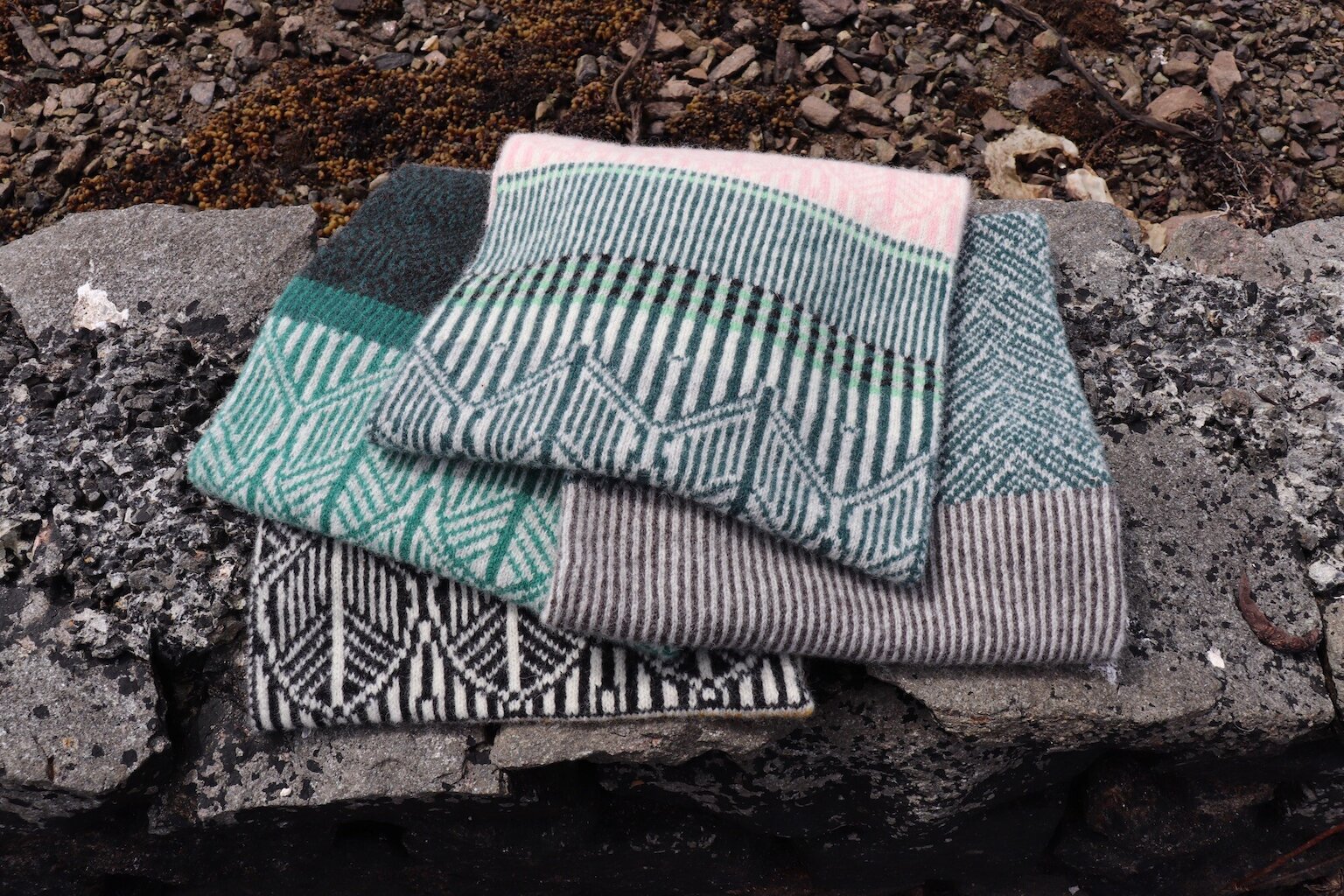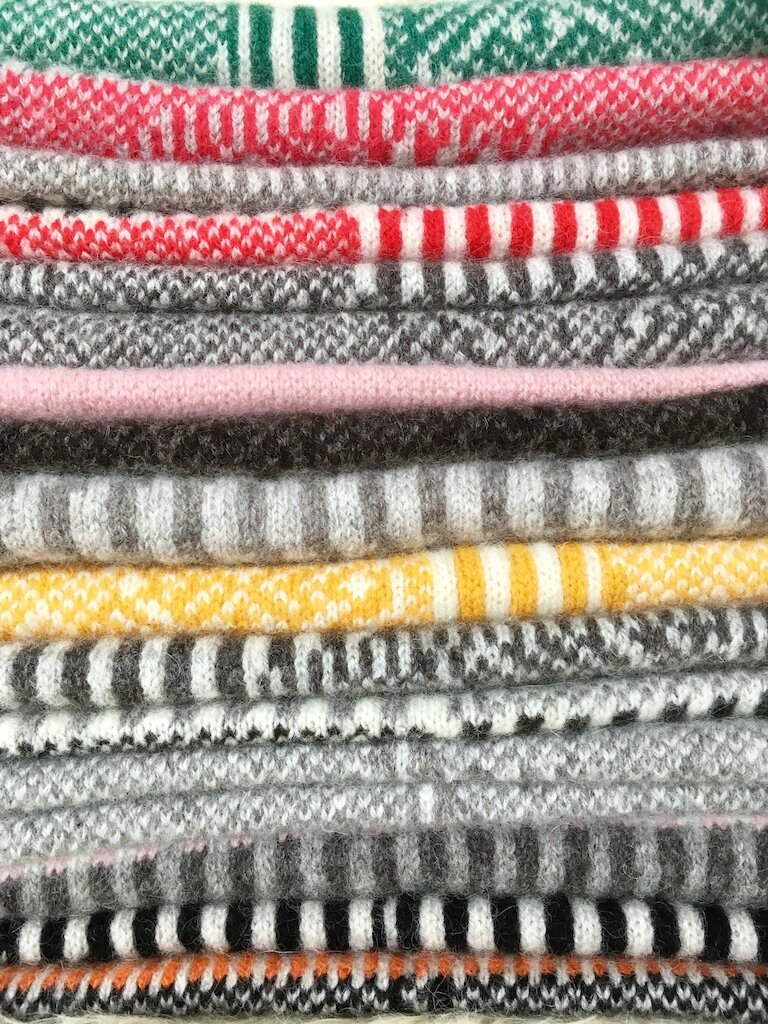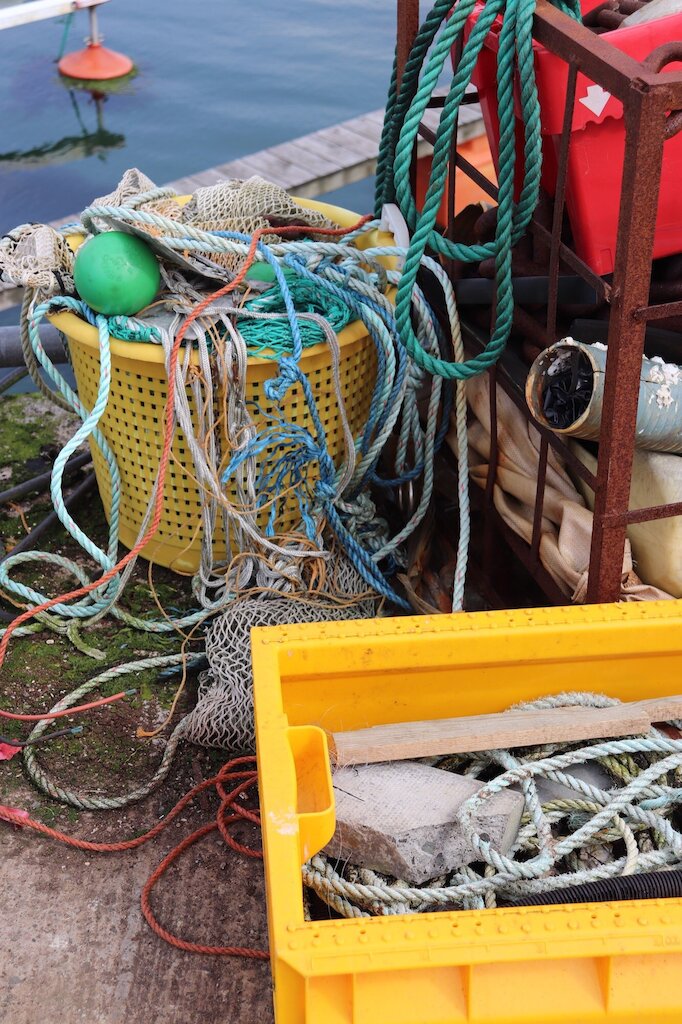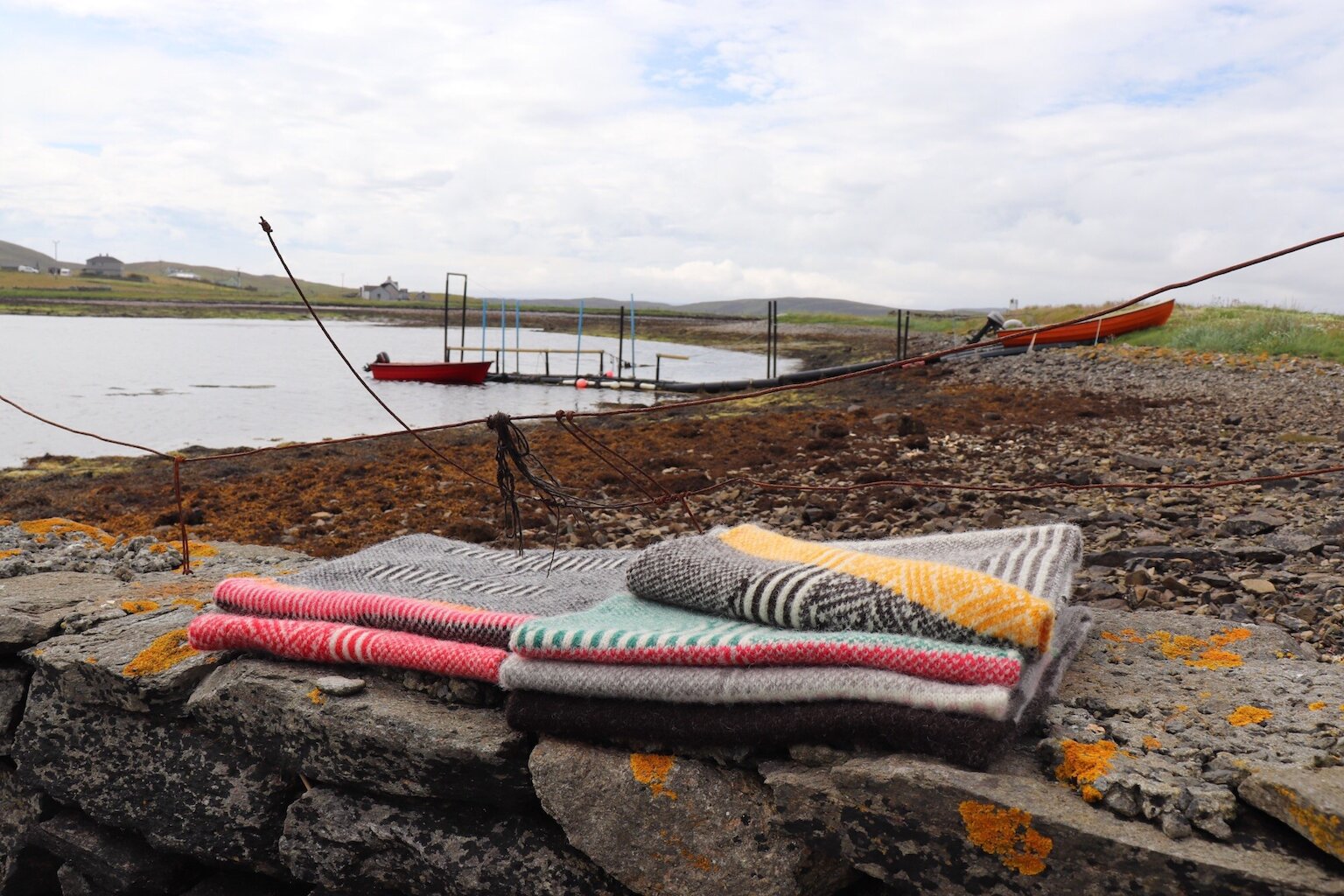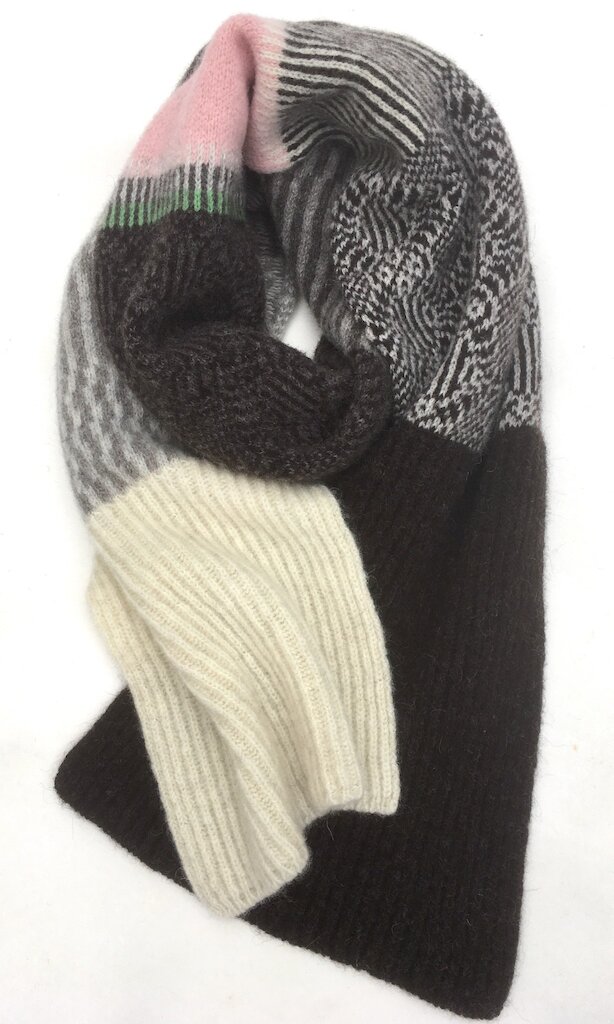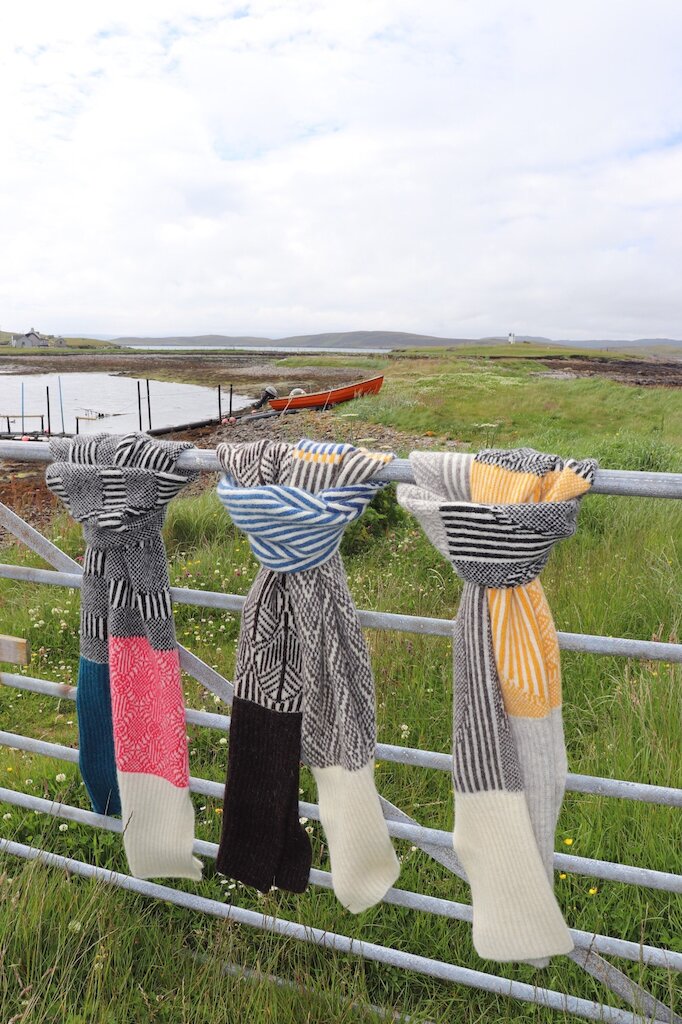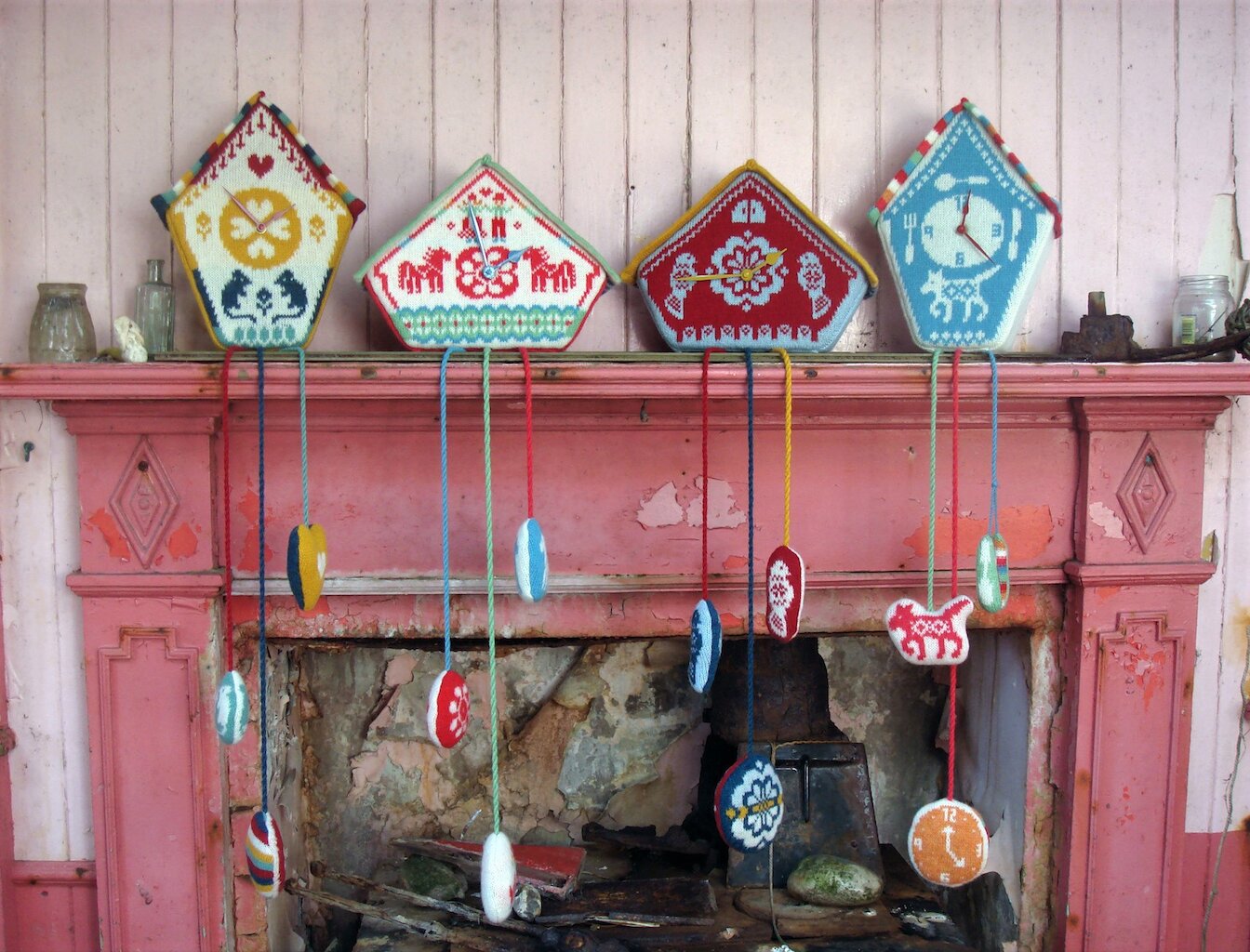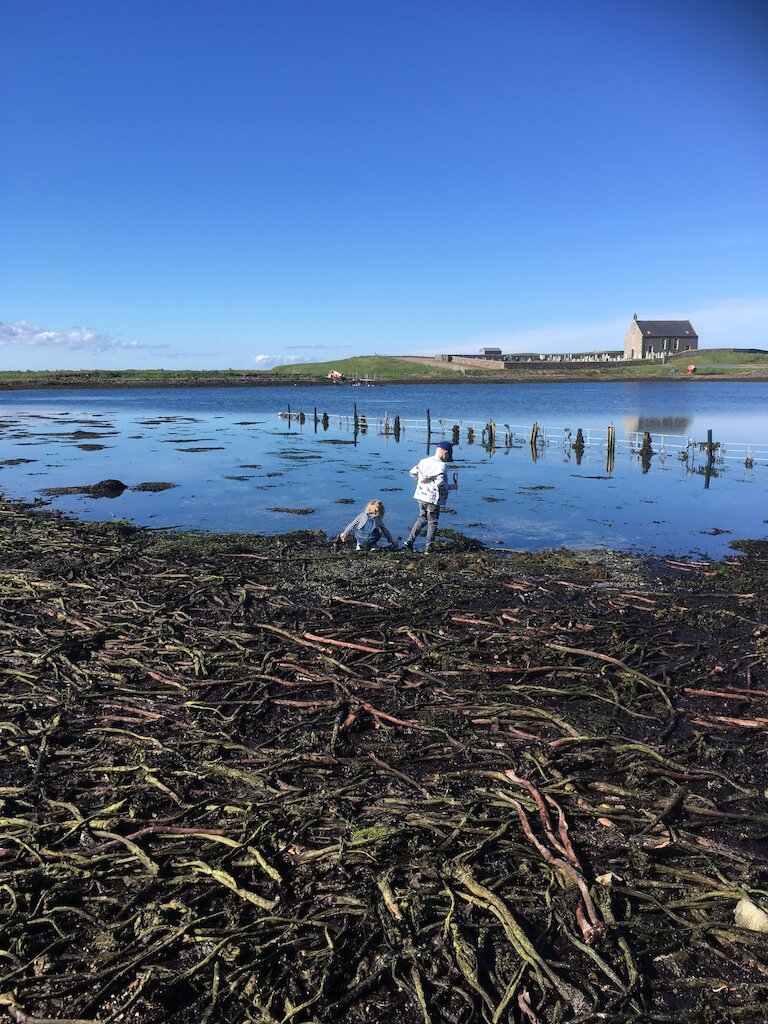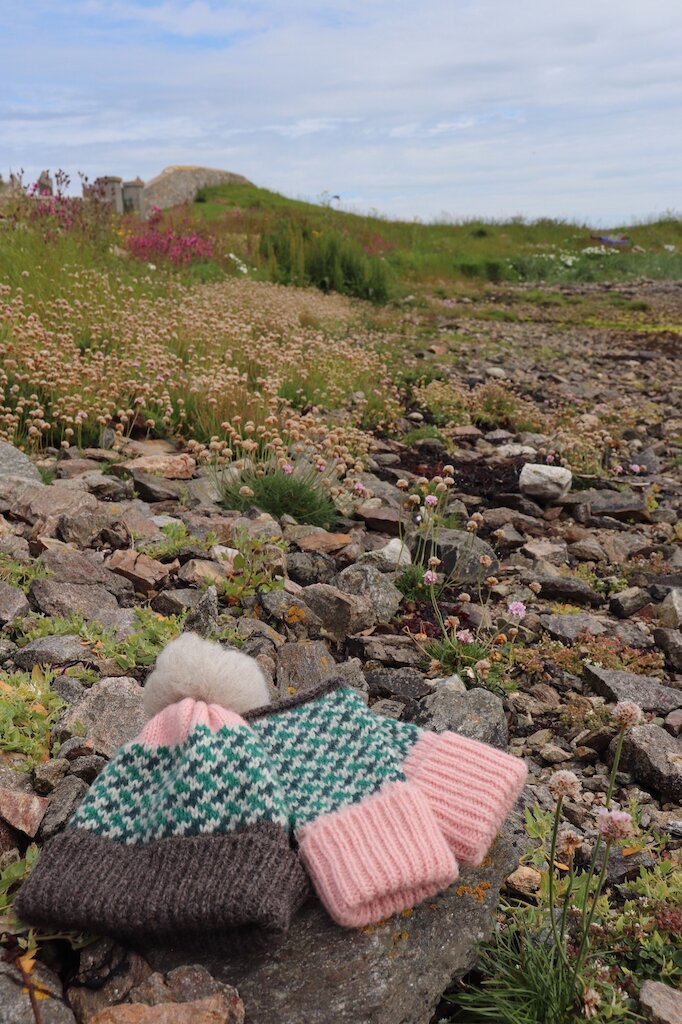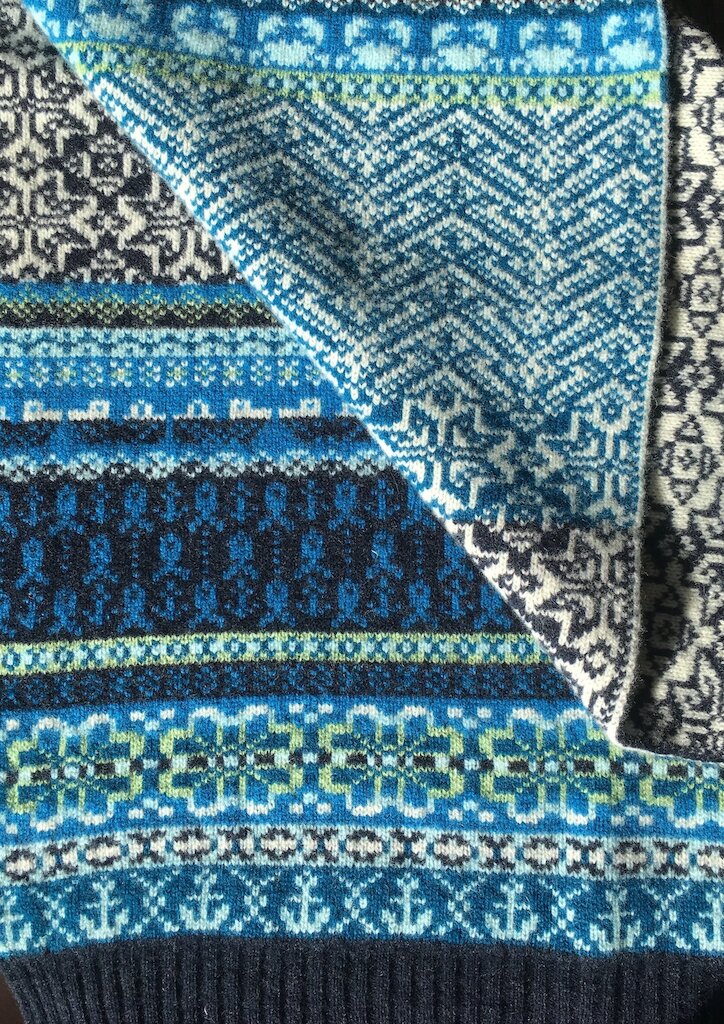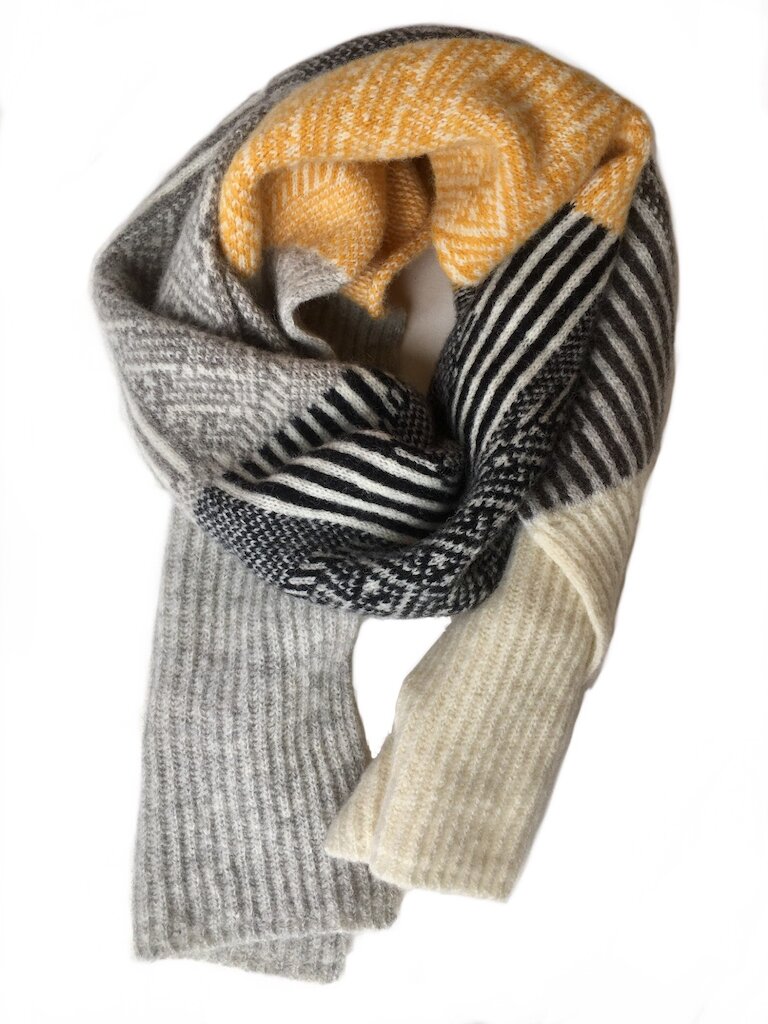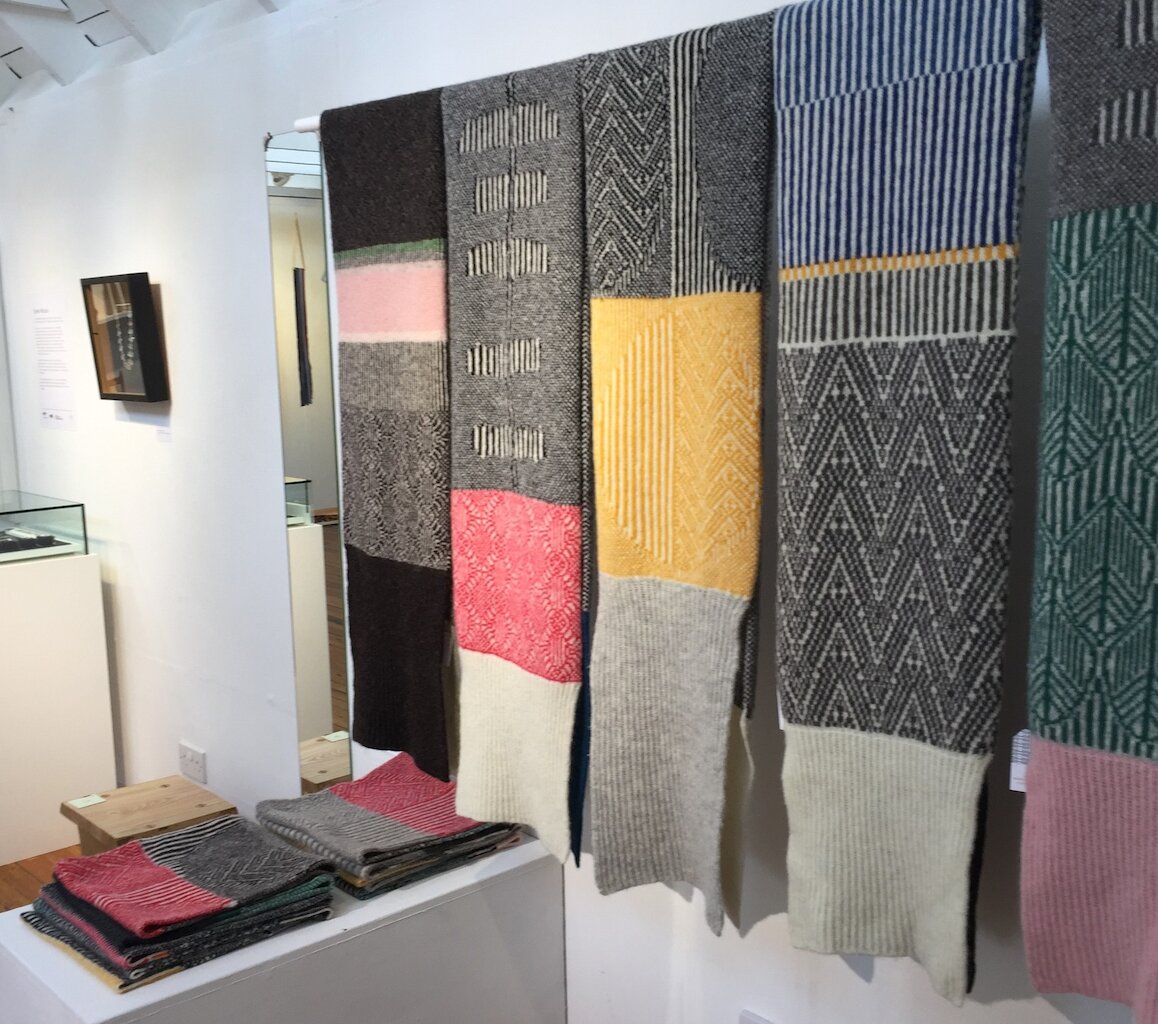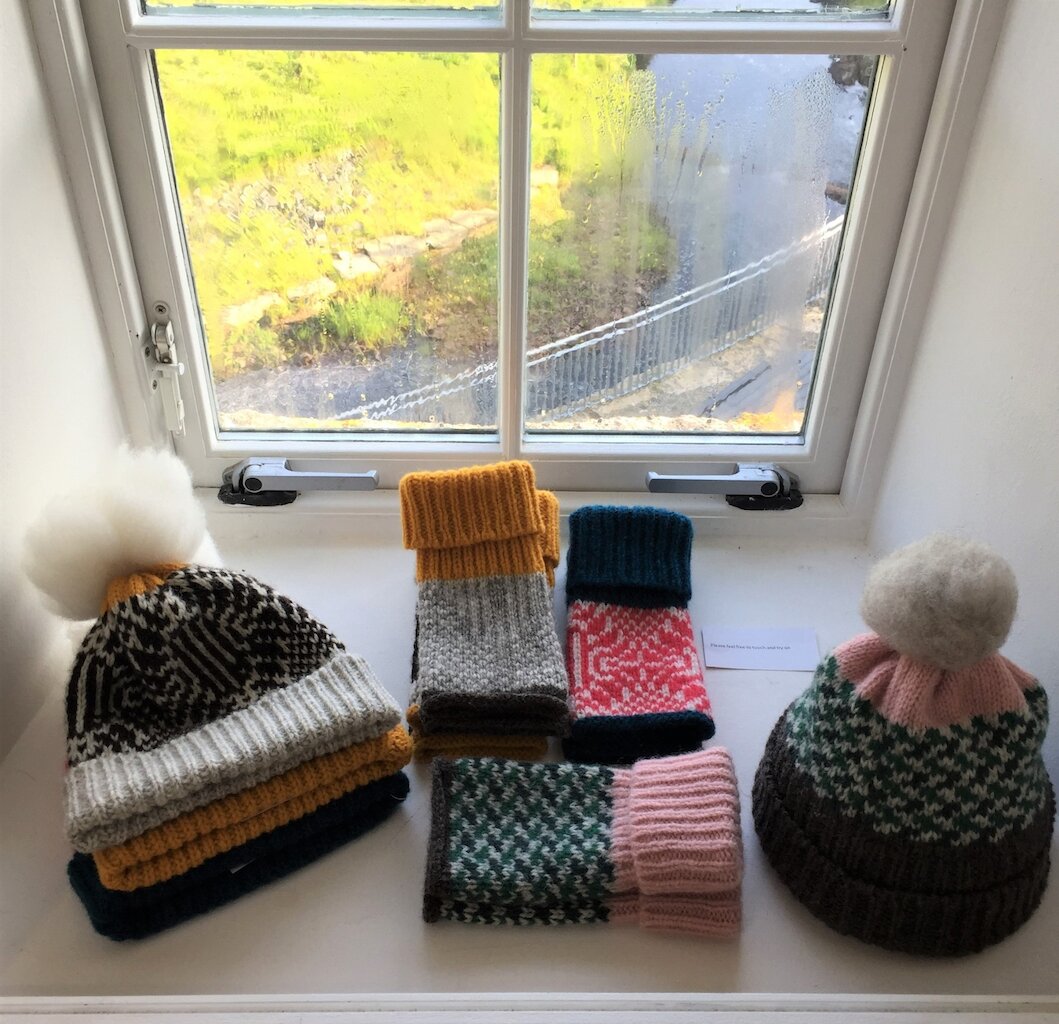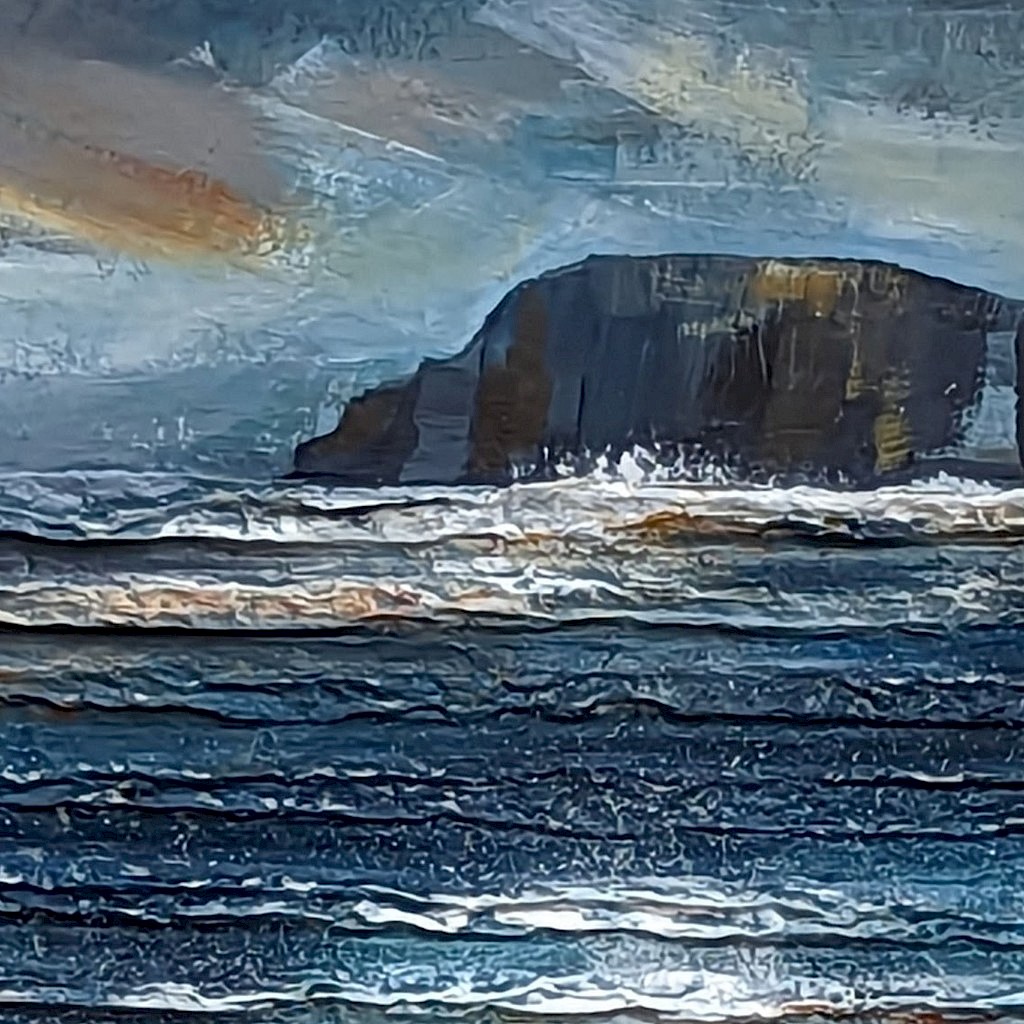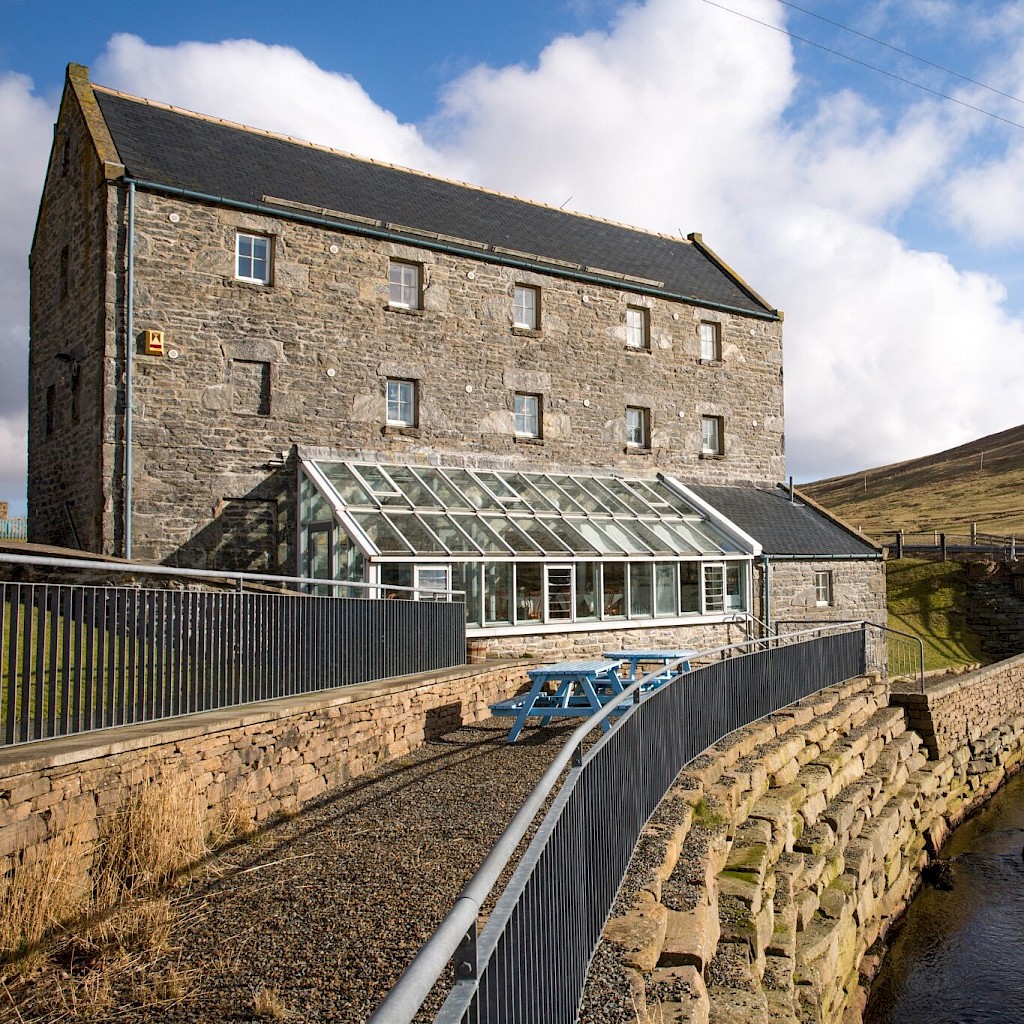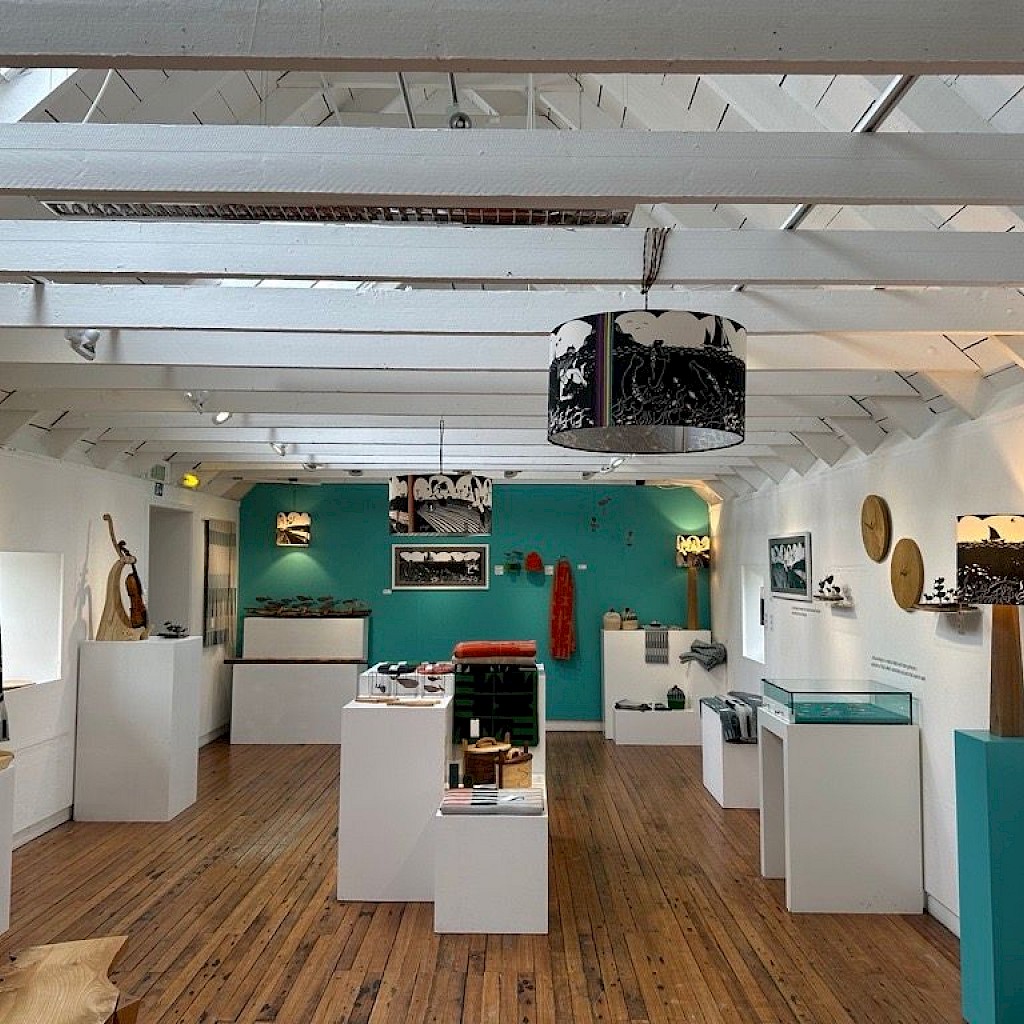Where do you do your work?
I have a tiny workshop at my home in Whalsay. It’s good to have somewhere you can escape to and as well as close the door when you’re done. I don’t have internet there and I don’t want it, it’s too distracting. I try to focus my time there on practical design work.
What is your background?
I’ve always lived in Shetland except when I went to university in Brighton to do my degree, I also did internships in design studios in London and Italy. It was really interesting and I learnt a lot but I always expected to come back home. I enjoy exploring new places but as Dorothy said, there is no place like home. I come from families with typical Shetland backgrounds like fishermen, crofters, herring lasses and knitters and these are the themes I keep coming back to in my work.
I learnt to knit when I was peerie but it wasn’t until I tried machine knitting during my last year of school that it really captured my interest. I like the mechanical side of the machines themselves and figuring out how to come up with interesting fabrics. I worked at the Shetland Woollen Co. for a couple of years (which is the Scalloway museum now). They sent high quality knitwear to customers all over the world. I helped operate the power frame machines, mainly threading up the cones of yarn, changing the odd broken needle and checking the pieces as they came off and mending any dropped stitches; I’m an excellent fixer of holes thanks to working there, which is always handy!
I have also done teaching and led workshops since I began working for myself in 2006. I have been either studying or employed in knitwear/textiles in some way for over 20 years now, although I still feel like I don’t really know what I want to be when I grow up.
Who or what do you draw inspiration from?
I’m probably most inspired by the everyday, my island surroundings, the little things that are absorbed nearly without thinking about it and the stories and recollections from family and neighbours of people and places. It’s probably why I wouldn’t have a studio in a city, it would be too unkan. It's the inventiveness of generations of Shetland knitters... the wool itself...
How do you work, what is your process?
I don’t really have a set method I repeat each time, sometimes I’ll be experimenting with a particular stitch and that lends itself to becoming something and other times I’ll be thinking about a concept and it’s then figuring out the techniques to make it work. I often take photos out and about or do sketches for visual reference, then use software for creating knitting patterns and motifs that connects to a domestic electronic knitting machine to work on knitting swatches. Domestic machines are fairly basic tech really, companies like Brother and Passap who made the best ones stopped production on knitting machines in the 90’s. I sometimes use a punchcard machine too. I think sometimes folk think the machine does everything for you but it’s just a tool, you get out of it what your imagination puts in and the limits of the machine are all part of the problem solving challenge to think creatively. If it’s a design I plan on repeating I organise to have programs done for production on industrial machines at the Shetland College Textile Facilitation Unit. It’s a useful resource, we’re lucky to have access to it.
Why do you choose to use the materials that you use?
It’s all about the oo! The more local the better! I use fine lambswools as well, particularly for the baby things, but I enjoy working with Shetland wool much more, I like the springy character of the fibre and the way it reflects the light. It all begins with the sheep we drive past everyday grazing along the verges, they even conveniently grow wool in a range of natural shades; it’s such a gift for a textile designer.
I like the complete circle of designing in Shetland, landscape - sheep - wool - yarns - knitwear designs, all inspired by the landscape and life within it.
Do you have a favourite piece to make?
The one I haven’t made yet. Working out how to do the next thing is always the best bit.
What are your most popular pieces?
I made knitted clocks for a while, there seems to be plenty of people who enjoy a sense of the absurd around the world, which is wonderful. They had a bit of press attention after I exhibited at a trade show in London and were featured in the Sunday Times magazine and the Telegraph, and they were stocked by Anthropologie for their stores in the US. Keeping time can be a serious business but I wanted to do something playful with it. It was a challenge to get right technically, as there were many different component parts to make, so it could be functional as well as being decorative. It seemed so simple and obvious when I was done, but I started by making model shapes from gardening wire trying to figure out scale and proportion, I didn’t really know how it would turn out. I suppose it’s impossible to tell how any idea will turn out. Have a go anyway.
How long does it take you to complete a piece?
Between an hour and a day but it can sometimes take months of experiments and sampling to get to the stage where a design is ready to make as a repeatable finished piece. The development stage is the most fun. However, is also the bit that is hardest to set time aside for when your busy making orders for existing designs, because you’re not generating income from the hours spent designing, and you can never really tell how well a new design will sell to pay back the development time, so there is a risk involved.
Art aside, what do you like to do in your spare time?
Other than binge watching series on Netflix when the bairns go to bed, haha! I like getting out for a walk, the bairns like looking for crabs and finding things along the banks. I’m a bit of a book addict and I love to catch up with friends. I was obsessed with horses when I was younger, I loved trucking about covered in gutter and horsehair, although it’s been years since I did any horse riding, horsy motifs often seem to work their way into my designs.
Who are your biggest influences?
My biggest influences have been the other Shetland knitters and the tutors I have learnt so much from, with their kind words of encouragement. The local designers who have been successful in developing their individual take on Shetland knitwear, like Wilma Malcomson and her magical colours; Doreen Brown who made being a knitwear designer seem like an appealing lifestyle; Wendy Inkster who did something completely new and was repurposing and up-cycling before those terms were popularised. My family members and so many others, I hope I don’t insult by not writing a big list.
Many of the same old traditional patterns and the same yarns and knitting techniques themselves are used widely but it’s about experimenting to find your own voice with the colour combinations and pattern arrangements to give it that individual look, that’s the goal I think.
Having so many talented contemporaries in the islands keeps Shetland textiles fresh and evolving.
How has your practice changed over time?
I suppose a sense of style and taste just matures over time, I probably felt more pressure to think of things with a novel aspect out of art school, but I value the longevity of more traditional based pieces now. I had fun thinking of ways to apply knitting to things that weren't garments like the clocks but I think I just want to make some jumpers now. I have a Victoria Gibson textured hand knit I’ve had since I was a teenager and I still wear it sometimes. I don’t have any other garments that have transcended decades, I would love to manage that.
What is next for you?
I have many hatchling ideas after spending a while not working so much and having time to think about my practice more objectively. I’d like to do more garments, accessories like scarves and cushions and blankets are all rectangles, it’ll be good to do some shapes. The three dimensional quality of knitted structures is one of the reasons I chose it as a specialism rather than print or weave. I’ve been thinking about writing knitting patterns too, I’ve been asked a few times over the years but never seemed to fit it in with whatever else was happening. Whatever it is, it will most likely be made out of wool!.
